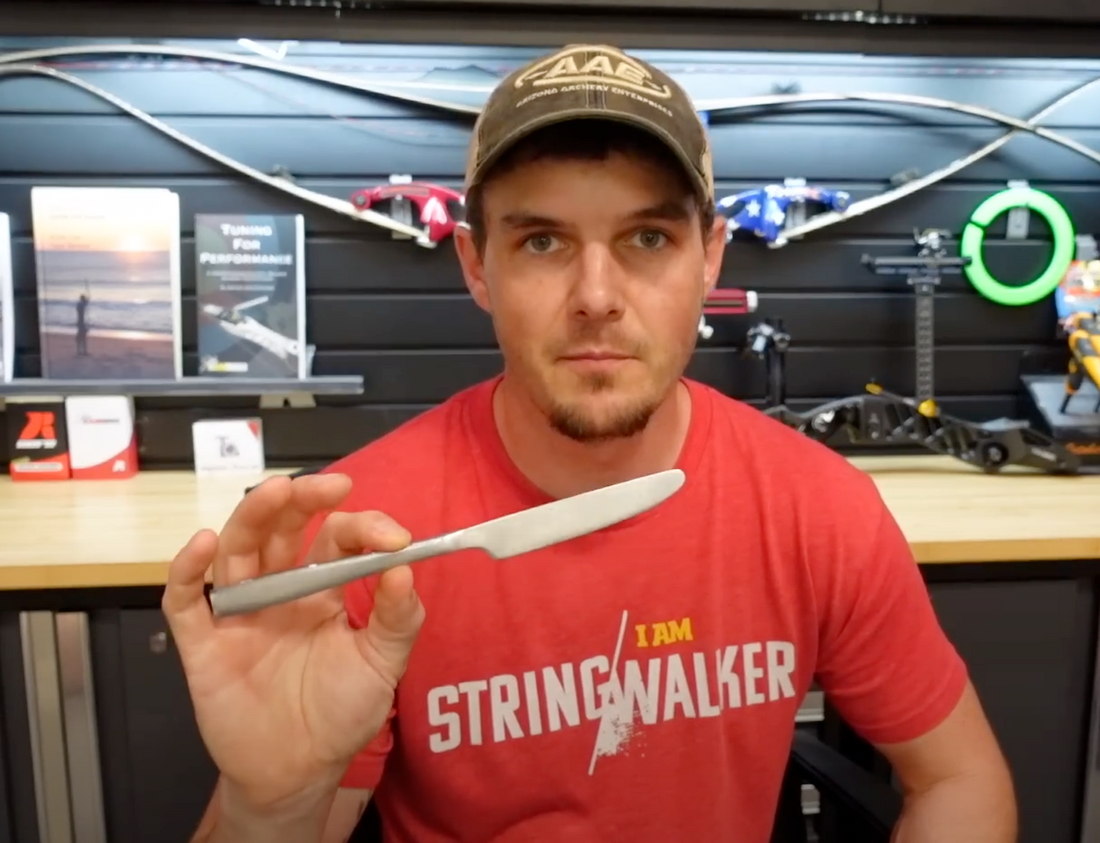
A Butter Knife, Forearm Pain, and Better Archery
Compartir
If you’re an archer and you’ve started noticing less dexterity in your fingers, reduced sensation, or nagging discomfort in your wrists, hands, or forearms, you’re not alone—and you don’t have to just live with it. Whether you shoot professionally or recreationally, your body’s health directly affects your performance. In this post, we’re diving into a simple, surprisingly effective self-care technique using a butter knife to improve mobility and reduce pain.
Why Self-Care Matters in Archery
You don’t have to shoot hundreds of arrows a day to develop tightness or adhesions in your arms. Typing all day, turning wrenches, or just repetitive movement from your draw cycle can lead to stiffness, tingling, and even numbness. For many archers, this shows up in:
-
Loss of finger sensation or control
-
Dull aches in the wrist or elbow
-
Decreased range of motion or grip strength
-
General fatigue or tightness on either the bow or draw side
This is where a bit of strategic soft tissue work can go a long way.
The Tool: A Butter Knife
Yes, really—a butter knife.
More specifically, the handle of a butter knife. We're not using the blade, of course, but instead the rounded or gently squared-off edge of the handle. It’s an accessible stand-in for tools used in Gua Sha, a traditional Chinese technique that’s also been adopted in Western rehab practices under names like Graston Technique.
If you’d like to try a more specialized tool, you can explore Gua Sha tools made for self-massage (we’ve included links in the description of the original video). But a butter knife will do the job surprisingly well.
You'll also need a bit of oil—coconut oil is out favorite but any kind of massage-friendly cream will help reduce friction and make this technique more comfortable. **DO NOT do this without oil or lotion.... the bruising and misery to follow is just not worth it.
How to Use It
Once your forearm is lubricated, here’s what to do:
-
Grip the dull butter knife by the blade end (dull side! don't cut yourself) and use the handle to gently drag across your skin—always toward the heart.
-
Apply only light pressure—just the weight of the tool and your hand. This isn’t about deep digging.
-
Work in smooth strokes along the forearm, both across and along the muscles.
-
Pay attention to any spots that feel like “gristle,” “spider webs,” or “Rice Krispies.” That’s where you want to spend more time.
-
Continue until those spots begin to smooth out and feel less gritty.
Note: Always stroke toward the heart. Going in the opposite direction may bruise the tissue and leave your arm looking more battered than treated.
What You're Doing: Breaking Up Fascia
Those speed bumps you feel under the skin? That’s fascia—a web-like layer of connective tissue that surrounds your muscles. When it gets tight or adhesed to the muscle belly, it can restrict movement, cause discomfort, and reduce performance. Gentle scraping like this helps separate those sticky layers and restore mobility.
Taking It Further: Range of Motion Techniques
Once the tissue starts to smooth out, you can enhance the effect:
-
Extend and flex your wrist while gently scraping.
-
Open and close your fingers.
-
Rotate your forearm slowly while continuing the strokes.
This helps work the fascia and muscle through a fuller range of motion, which can further improve circulation and break up restrictions.
What to Expect
Most archers who use this technique notice:
-
Improved finger sensitivity
-
Reduced tightness and pain
-
Greater control at full draw
-
More consistent releases
Done a few times per week, it can reduce your need for frequent massage sessions—or help you get more out of them. The skin may turn pink or a bit red but if you notice any bruising then stop the treatment as chances are you're using too much pressure.
Before a Tournament? Do This.
Jake used this exact method in the lead-up to major competitions (a few days before). It helped him reduce discomfort, stay sharp, and maintain connection with the string. Whether you’re competing or just trying to enjoy pain-free shooting, this is a low-effort, high-reward routine that takes just a few minutes per arm.
If you’d like more in-depth info on archery-specific self-care and training, check out our book Training for Archery. It’s full of practical tools and strategies for all levels of shooters. You can find it on KaminskiArchery.com under the "Books" section.
Have questions about this technique or want to see a video of it in action? You’ll find the full demo on our YouTube channel.
Thanks for reading, and here’s to feeling great on the line.

